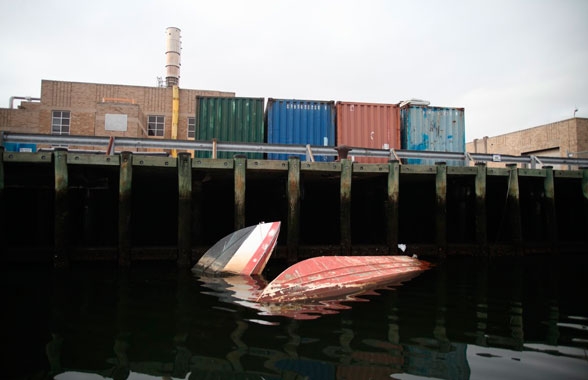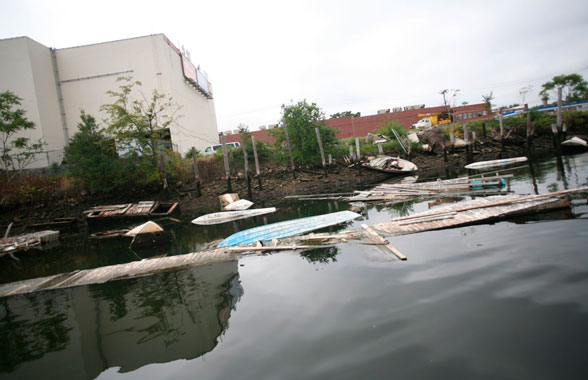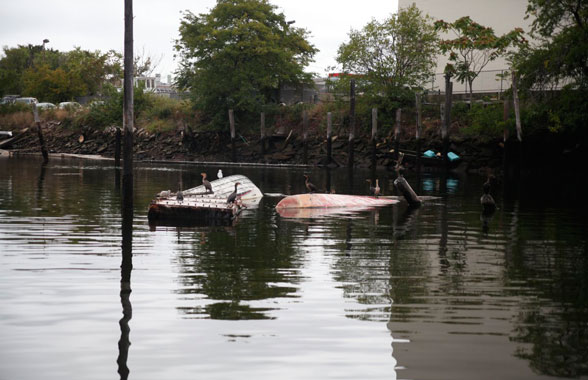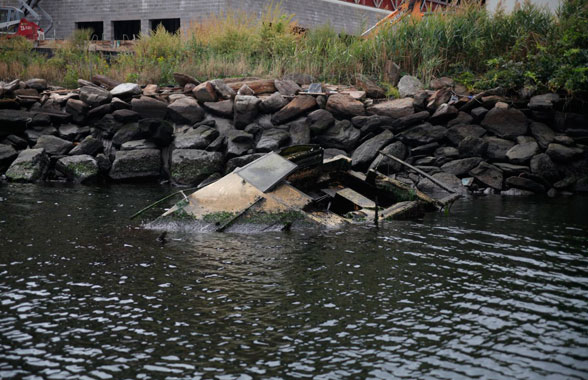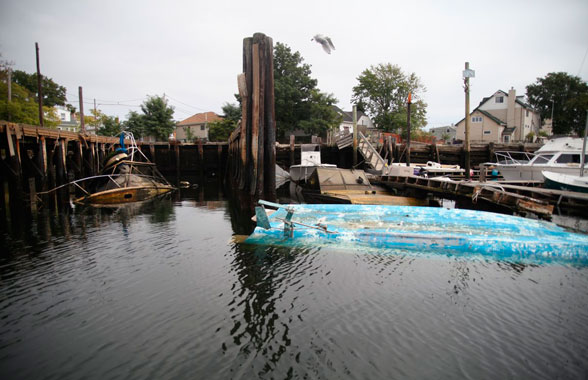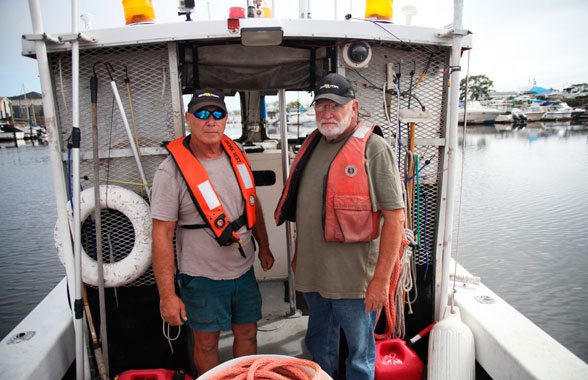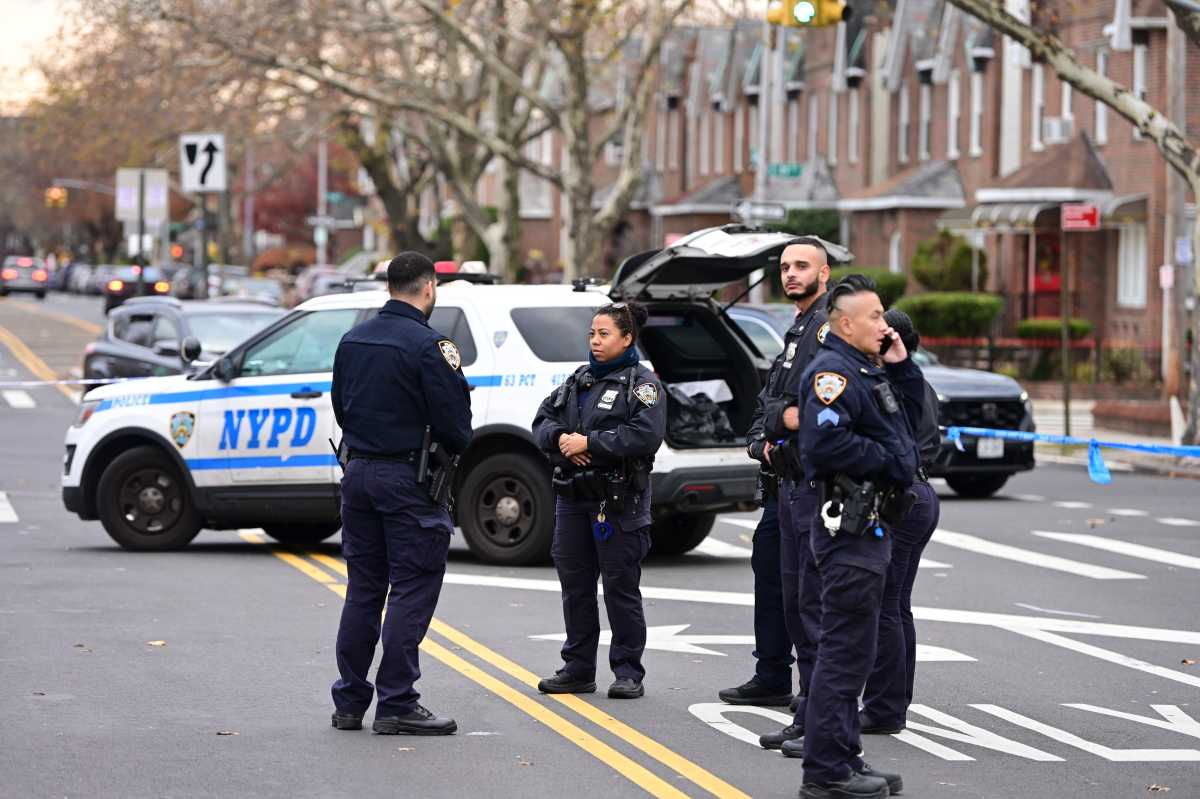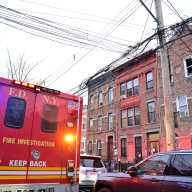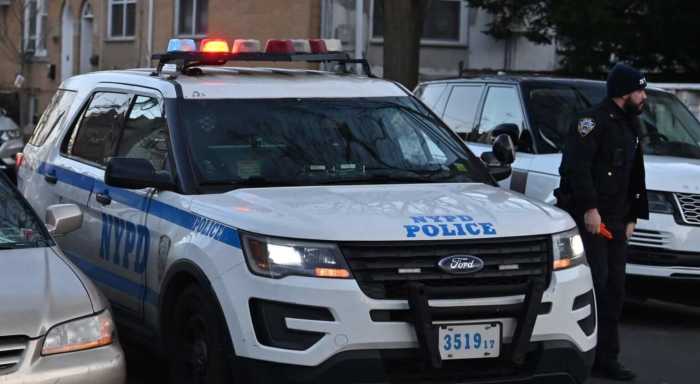Much of the wreckage wrought by Hurricane Sandy three years ago has been cleared away — at least on land — but the surrounding seas tell a different story.
The waters of Southern Brooklyn are littered with the drowned husks of hundreds of sunken vessels poised to wreak havoc upon unwitting boaters and the ecology of Kings County’s coastline, according to local salvage experts.
“Jamaica Bay is full of boats, but nobody’s doing anything,” said Captain Jack Schachner, part owner of White Cap Marine Rescue Services. “It’s like they say — ‘out of sight, out of mind.’ ”
Jack, along with his brother and partner Captain Bernie Schachner, led this Courier reporter on a tour aboard their vessel White Cap One of Shell Bank Creek, an inlet lined with docks and boats separating Sheepshead Bay and Gerritsen Beach. Amongst the marinas and the slips there were dozens of breached, capsized, and otherwise ruined vessels clogging the waters that Brooklyn sailors ply day in and day out.
White Cap One set out from Gateway Marina on Sept. 28, during a low tide that revealed the rusty and mold-blackened tops of sunken house boats, upturned motorboats piled one atop the other by the docks, and wrecks jutting out of the open water. But most of what was so obvious at low tide is submerged whenever the tide comes in — lurking just beneath the surface, at the perfect depth to snare passing sea traffic.
“That’s a hazard to navigation,” Captain Bernie said, pointing to a half-submerged house boat. “Once the high tide comes in, you won’t see that, and somebody could clip it, easy.”
Even during low tide, the veritable ship’s graveyard on display above the waterline represented only a small portion of the sunken hulks that crowd the seabed beneath Shell Bank Creek.
“This is just the tip of the iceberg,” said Captain Jack. “What you see is a fraction compared to what’s underwater.”
To prove the point, Captain Jack pointed at the display mounted above the ship’s wheel, the black screen flaring with red dots whenever his sonar picked up any jutting features at the bottom of the creek. The flashing display was seldom blank.
Making matters worse, many of the shipwrecks don’t just stay stuck in the muck, but instead have a habit of dislodging themselves in the currents and drifting around, creating unpredictable hazards and even damaging docks and other vessels.
Dan Ene, who runs a canvas shop out of a house boat moored in the creek, flagged down the White Cap One as it passed by to point out a capsized boat now jammed against his dock, saying it had only just drifted down the inlet overnight to smash into the wooden planks beside him.
But perhaps most worrisome of all are the many gallons of fuel and oil still trapped within the tanks and engines of the sunken ships, just waiting for the effects of weather and corrosion to flood the creek with their toxic contents.
“It’s a ticking time bomb,” said Captain Jack.
Not all of the derelict vessels clogging Shell Bank Creek were sunk by Hurricane Sandy, according to the seafaring Schachners, who said the 2012 superstorm only added to a problem that has long plagued not only the inlet but all of Southern Brooklyn’s coastal waters.
And it’s not just Mother Nature making the problem worse. In a perfect demonstration of the “broken-window theory,” sinister skippers looking to ditch old boats — which can cost thousands of dollars to dispose of properly — come to the crowded nautical purgatory of Shell Bank Creek and simply scuttle them, as happened recently to a Gerritsen Beach couple.
“When people see something like this, they say, ‘f— it,’ and come tie up their old boat there and leave it,” said Captain Bernie.
Last year, the Parks Department bid-out the city’s first contract for removal of derelict boats and debris from municipal waters, and allocated $2 million to remove 52 vessels and 400-cubic yards of debris that resulted from Hurricane Sandy, according to a Parks spokeswoman.
The contract, which was awarded to Custom Marine, has so far seen 25 boats and 108 cubic yards of debris removed from around the Bronx and elsewhere, but hasn’t yet funded any clean up in Jamiaca Bay, according to the city.
Councilman Alan Maisel (D–Marine Park), who recently spoke to Mayor DeBlasio about securing federal assistance to tackle the problem, has tried for years to get the city to devote resources to cleaning the bay, but without results.
“I want them to come up with FEMA money to pay for it,” said Maisel. “If the city wants to put its own money that’s fine, but I haven’t been able to get anybody to respond to me.”
Maisel said he has reached out to the city’s departments of sanitation, transportation, environmental protection, and the state Department of Environmental Conservation about the problem, but to no avail.
“Nobody wants it,” he said.
And it’s definitely the city’s problem. The Coast Guard will only assist in raising recreational wrecks if the boats are either blocking commercial traffic, or currently leaking oil — enough oil to justify dipping into the taxpayer-funded Federal Oil Spill Fund, which was created following the 1989 Exxon Valdez oil spill, according to Coast Guard spokesman Charles Rowe.
So unless there’s a major change in the city’s policy, there’s very little chance the hundreds of wrecks clogging Brooklyn’s coasts are shipping out anytime soon.
“These boats have been in here for years and years, and don’t think we haven’t called the city about it,” said Captain Bernie. “But nobody wanted to hear about it.”
